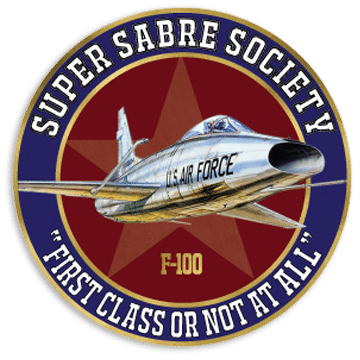“I was born on 25 Mar 1941 in rural Iowa and grew up among farmers and ranchers. While attending Morningside College in Sioux City, Iowa, I joined the Iowa Air Guard.
Charlie Blumer and I were assigned to the medics. One day at summer camp at Volk Field, Wisconsin, we were watching the jets flying in the pattern and wondered if we could do that. ANG units get two pilot training slots per year so Charlie got one. I had to wait for the next slot so I was delayed for a while. On 26 Jan 1968, the 185 TFG was called to active duty while I was in UPT at Laughlin AFB.
Charlie had just completed his F-100 checkout and went to Phu Cat with the 174 TFS in May 1968 while I was still at Cannon AFB for F-100 checkout. So, I was a new guy in the squadron when they returned from Phu Cat in May 1969.
I worked for the Chamber of Commerce while flying as a part-timer in Sioux City. Later on, I got involved in cattle ranching and was a farm loan officer for the Toy National Bank. I received my callsign of “BRONCO” because of the many injuries I had received riding horses and chasing cattle. Yet, I did not receive a scratch when I ejected from an F-100C in 1970.
The “BATS” 174 TFS operated the F-100C until converting to the D model in 1974. In 1977, we transitioned to the A-7D and I flew it until retirement as a LtCol in 1992. Now I have retired to a small ranch in rural South Dakota across the river from Sioux City and still help a neighbor with his cattle operation.
Those were the days.”
Bob Brink’s Caterpillar Story -BRONCO EJECT
F-100C 54-2012 was famous for its role in “The Great Race” at a Blue Angel Airshow in Sioux City, Iowa in 1964.
Dick “SONIC” Strohmeier was to fly a 140 NM round trip to Sioux Falls, SD while a Stearman flew 14 miles to Sioux City and back. The Stearman was on short final to RWY 17 as the transonic Super Sabre roared over the field to land on RWY 13 before the Stearman touched down. Strohmeier had left a trail of broken windows on the route and earned a debrief from the commander. But Blue Angel lead holding short for takeoff said it was the best low pass he had ever seen.
On 11 Jul 70, a drill weekend, I was assigned a HI-LO-HI mission to the Smoky Hill Gunnery range in Kansas. Jerry “Big Ed” Edwards was flight leader. He had been Misty FAC No. 69 and was a local farmer who spoke in a slow southern drawl. My assigned F-100C would not start, so I got out and went to the spare while the flight taxied out to the arming area. During after-start checks, the spare dumped a hydraulic failure. Our crack maintenance troops quickly prepared another jet. It was 54-2012 that was not configured with bombs, but at least I would be able to strafe.
The flight took off and told me to join up at the IP for the low-level portion to the range. I roared off in burner all the way to the IP and was able to join up with the flight in time for the range mission.
After leaving the range, we made simulated passes on a dam in Nebraska, but when I joined up, the Great Racer began to misbehave. Big Ed said, “Hey, ya look like a blowtorch out your tail and ya better get ready to jump out.” I got busy in the cockpit and the engine was running but things did not look good when, in his slow drawl, he said, “Well, sonny, ya might better get out right about now.” I pulled the handles and squeezed the triggers and tried to think what I was supposed to do to beat the system if there was a failure, but everything worked as advertised and I had a smooth ejection.
After two swings in the chute, I landed in a muddy ditch near Edgar, Nebraska. Two farmers were there so one stayed with the seat, chute, and survival gear while the other took me in his pickup over to the wreckage that was burning while 20 mm rounds were cooking off. I had no injuries and was surprised to see an air force sergeant on leave there guarding the wreckage.
Soon, a highway patrolman picked me up and gave me a ride to Columbus, Nebraska where the ANG C-54 picked me up. There was no medical exam or anything back at the base in Sioux City, just straight to the local bar for debriefing. After this, my squadron mates admired my determination to fly but coined the “Bob Brink Rule” which said, “Try hard but just recognize when it may not be your day to fly. Know when to quit.” The accident board found that the J57 engine in 012 had shed a compressor blade.


